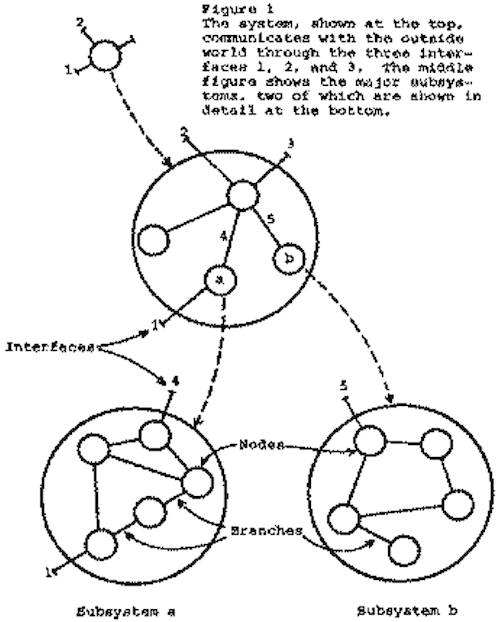How Systems Design Themselves
Continuing with on with articles on general Systems Design and foundational articles, today I would like to talk about Conway’s seminal paper on “How Do Committees Invent” from 1968. If you want to read the paper completely, you can do so on Conway’s web page.
In his article Conway describes system design at its most generic level. Be it a system to prevent natural disasters or a new product of a company.
Actors and Stages of Design
Under most circumstances the newly designed system has a sponsor who needs the system for an specific end. The task to can be carried out by the affected organization or an external group.
Two basic milestones have to be reached to continue with the design:
- Understanding the boundaries, those can be in place by reality or set by the sponsor of the design
- Information about the status quo of the system
The next step is then to organize the design team and set the scope of the the tasks of the sub groups.
The fourth and fifth step are the coordination of the tasks and the consolidation into a single design.
The System itself
A given system can be divided into a number of subsystems. Conway gives the example of the public transportation system, which consists on the top level of buses, trains, planes, etc. On the next level an airplane can be split up into subsystems for structure, propulsion, … and so on.
To illustrate this concept the author draws the following picture. The circles represent a (sub)system and the lines the connections between them.

This thinking about systems can be deployed for other concepts as well. So not only the “to be designed” system can be described this way but also the organization which designs it.
Systems / Design Group
The system and its design group are related. For a given subsystem x there will be a (part of the) design group (X) which designed this subsystem. The same holds true for the connections between subsystems (eg. x and y). If they are connected, we know that the design teams X and Y had to communicate at some point in time to design the interface.
So the design of the finished system is dependent on the preexisting design of the design group.
This kind of a structure-preserving relationship between two sets of things is called a homomorphism.
To underline his point Conway describes the following example from informatics:
A contract research organization had eight people who were to produce a COBOL and an ALGOL compiler. After some initial estimates of difficulty and time, five people were assigned to the COBOL job and three to the ALGOL job. The resulting COBOL compiler ran in five phases, the ALG0L compiler ran in three.
Results
The author summarizes the following thesis:
Organizations which design systems are constrained to produce designs which are copies of the communication structures of these organizations.
Since the initial organization of the design group may not be the right one for the newly designed system, flexibility is a key to effective design. Rewards have to be given to support the design manager in keeping the organization lean and flexible
Conway also takes a short detour, that especially large systems might be prone to failure, since the task of designing those systems is huge and overwhelming so that already the communication within the design group disintegrates, leading to the same result in the designed system.
Conclusion
What effects does this have for a supply chain designer? Can the supply chain be seen an image of the company’s structure itself? How does this affect business and research for the “optimal” supply chain design.
Update: Have a look at the comments below, Eleanor recommends a working paper from the Harvard Business School testing above hypothesis: https://hbswk.hbs.edu/item/first-look-feb-8
Conway, M. E. (1968). How Do Committees Invent? Datamation, 14 (4), 28-31








Add new comment